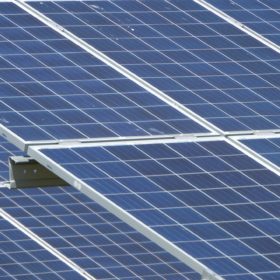EU Green Recovery plan could support 2.3 GW of Spanish solar project capacity
Three big projects are candidates for support from the Covid recovery plan laid out by the bloc.
UK Citizens’ Assembly speaks highly of solar – but is government listening?
Some 81% of the everyday folk asked how the U.K. should realize its net zero 2050 ambition said solar should be part of the mix and views were also aired on electric and hydrogen transport, home heating and how to incentivize companies to embrace a circular manufacturing model.
‘Energy transition requires us to do things better’
The annual EU PVSEC conference got under way virtually this morning via an online platform since the planned event in Lisbon could not go ahead due to the Covid-19 pandemic. Opening presentations revealed an air of optimism in the PV industry, amid expectations of a rapidly rising share in the energy mix, growing conversion efficiencies, advancing technology pathways and innovative solutions to the problem of integrating high levels of PV into electricity grids.
Will a watered down EU Just Transition Fund still be effective?
The EU Council has rejected a Covid-inspired European Commission proposal for a €40 billion warchest to help coal-dependent regions shift to renewables, with the heads of member states instead allocating €17.5 billion. Despite the final figure being €10 billion higher than that suggested by the commission before coronavirus battered Europe, questions have been asked about how useful the program will be.
Covid-19 weekly round-up: Dormant MiaSole claims Covid support in the US as Indian new solar figures slumped
Plus, analyst WoodMac says a fall in the cost of power generation in Japan during the public health crisis will help drive renewables investment and the Indian government has relaxed borrowing rules for its financially crippled electric utilities.
Erdogan opens ingot-to-module solar factory in Ankara
The $1.4 billion cost includes a 1 GW solar field 260km away in Konya. The factory was developed solely by Kalyon Solar Technologies after development partner Hanwha Q-Cells walked away from the project.
Covid-19 weekly round-up: Differing opinions on energy storage fall-out, a trade show update and some surprisingly positive financials
Negative second-quarter updates from China and uber-low new-solar figures from India, however, show the world is far from out of the woods yet.
Mexican regulator opposes solar energy communities and storage
With the government having already introduced measures which will reduce the volume of renewables in the national energy mix, further new provisions will restrict the deployment of energy storage and the ability of solar energy generators to sell excess power to nearby consumers.
The PV world 10 years ago – Summer Series Part V
pv magazine editor Pilar Sánchez Molina takes a look at PV sector news from 10 years ago as part of an ongoing series. These insights bring back memories of an exciting, challenging period, while pointing to where we might be in 2030.
The PV world ten years ago – summer series part II
pv magazine editor Pilar Sánchez Molina recalls news from the PV sector of ten years ago as part of a new series. The insights offered will not only bring back memories for the pioneers of that exciting, challenging period but may also offer an idea of where we could be in 2030.










